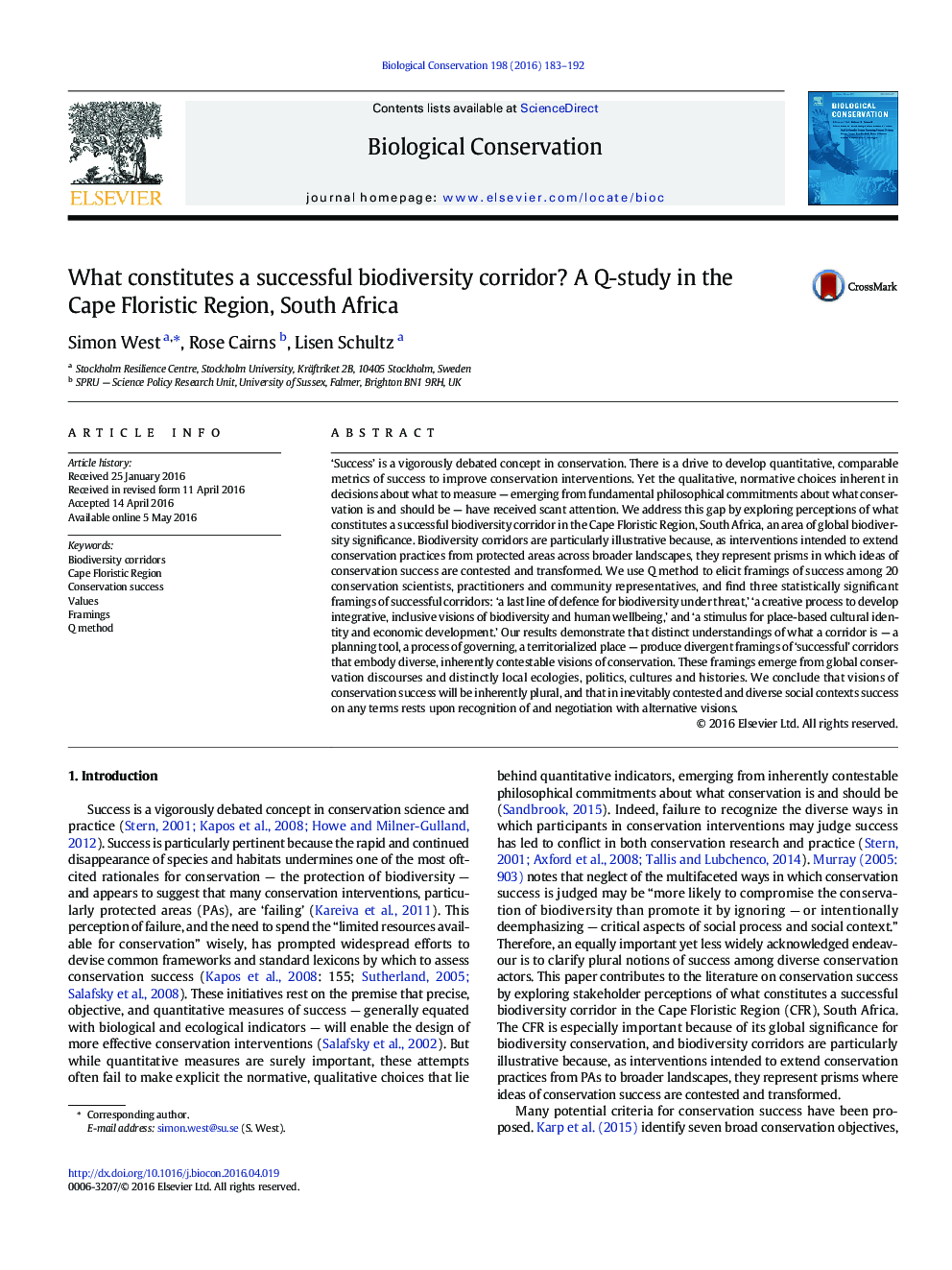| Article ID | Journal | Published Year | Pages | File Type |
|---|---|---|---|---|
| 4385025 | Biological Conservation | 2016 | 10 Pages |
•Demand is increasing for quantitative, comparable metrics of conservation success.•Such metrics are shaped by qualitative, normative choices that are often implicit.•We elicit framings of successful biodiversity corridors in the Cape Floristic Region.•Q method reveals three framings of success — corridor as plan, process, and place.•Recognising plural visions of success enhances conservation science and practice.
‘Success’ is a vigorously debated concept in conservation. There is a drive to develop quantitative, comparable metrics of success to improve conservation interventions. Yet the qualitative, normative choices inherent in decisions about what to measure — emerging from fundamental philosophical commitments about what conservation is and should be — have received scant attention. We address this gap by exploring perceptions of what constitutes a successful biodiversity corridor in the Cape Floristic Region, South Africa, an area of global biodiversity significance. Biodiversity corridors are particularly illustrative because, as interventions intended to extend conservation practices from protected areas across broader landscapes, they represent prisms in which ideas of conservation success are contested and transformed. We use Q method to elicit framings of success among 20 conservation scientists, practitioners and community representatives, and find three statistically significant framings of successful corridors: ‘a last line of defence for biodiversity under threat,’ ‘a creative process to develop integrative, inclusive visions of biodiversity and human wellbeing,’ and ‘a stimulus for place-based cultural identity and economic development.’ Our results demonstrate that distinct understandings of what a corridor is — a planning tool, a process of governing, a territorialized place — produce divergent framings of ‘successful’ corridors that embody diverse, inherently contestable visions of conservation. These framings emerge from global conservation discourses and distinctly local ecologies, politics, cultures and histories. We conclude that visions of conservation success will be inherently plural, and that in inevitably contested and diverse social contexts success on any terms rests upon recognition of and negotiation with alternative visions.
